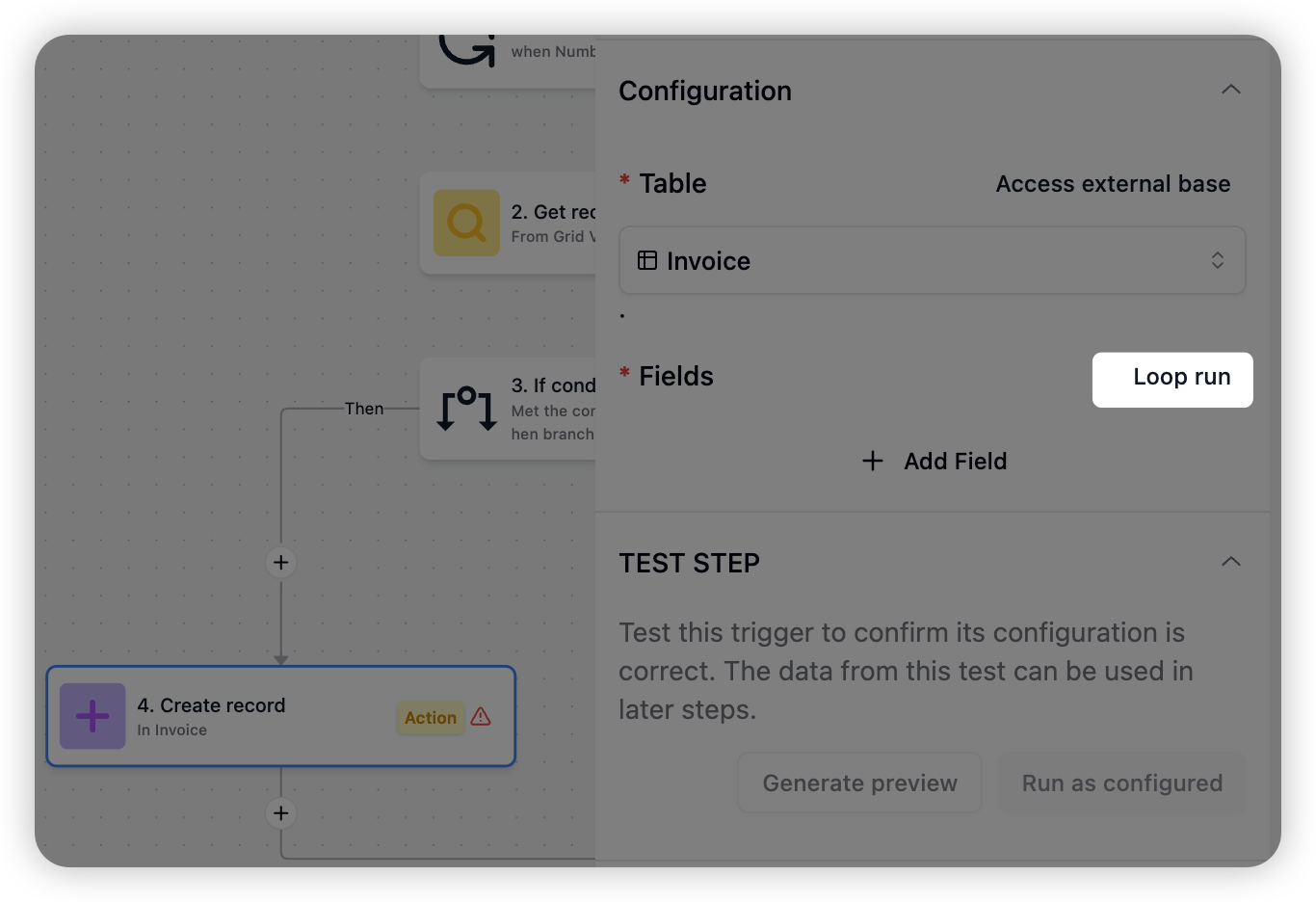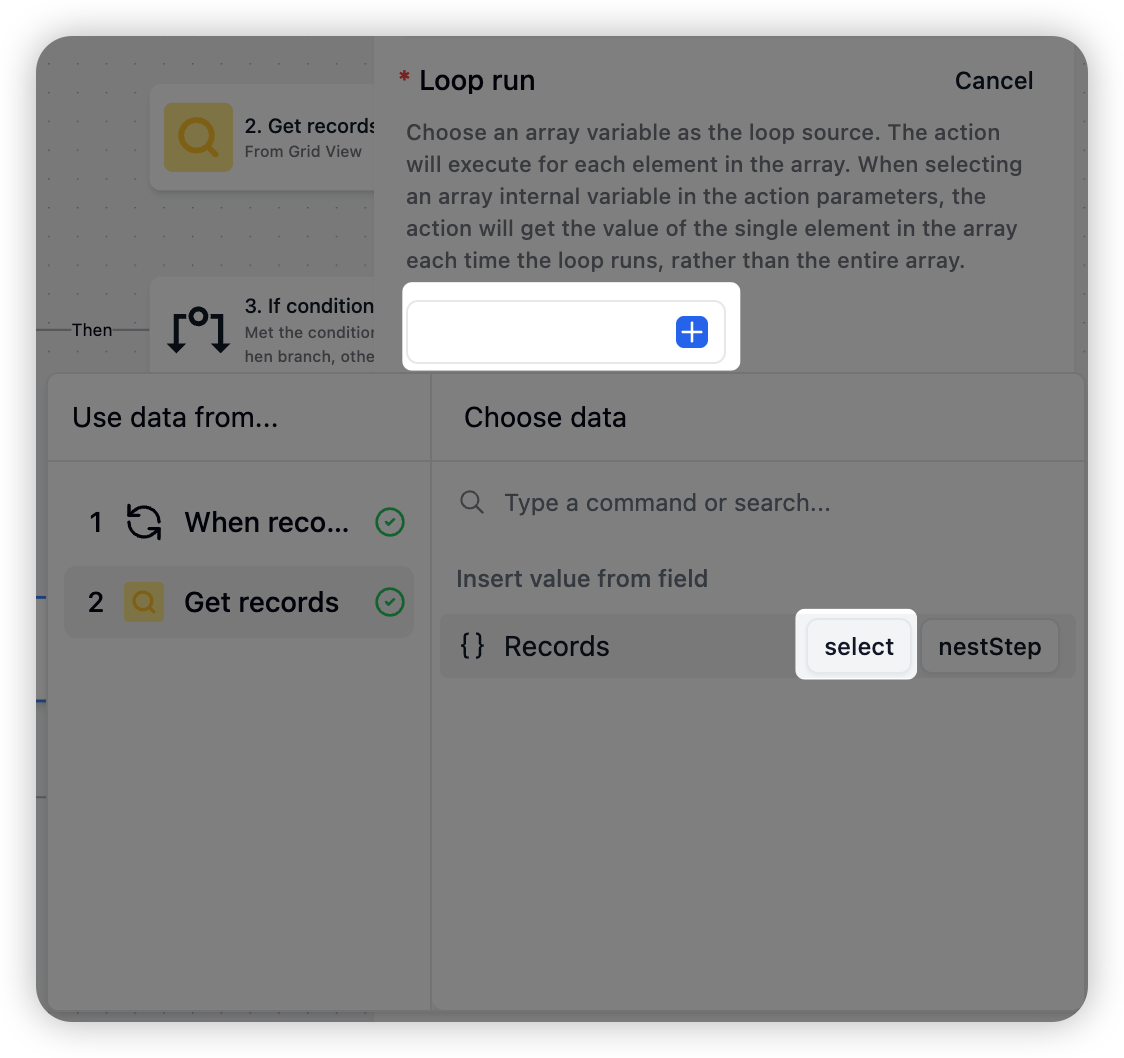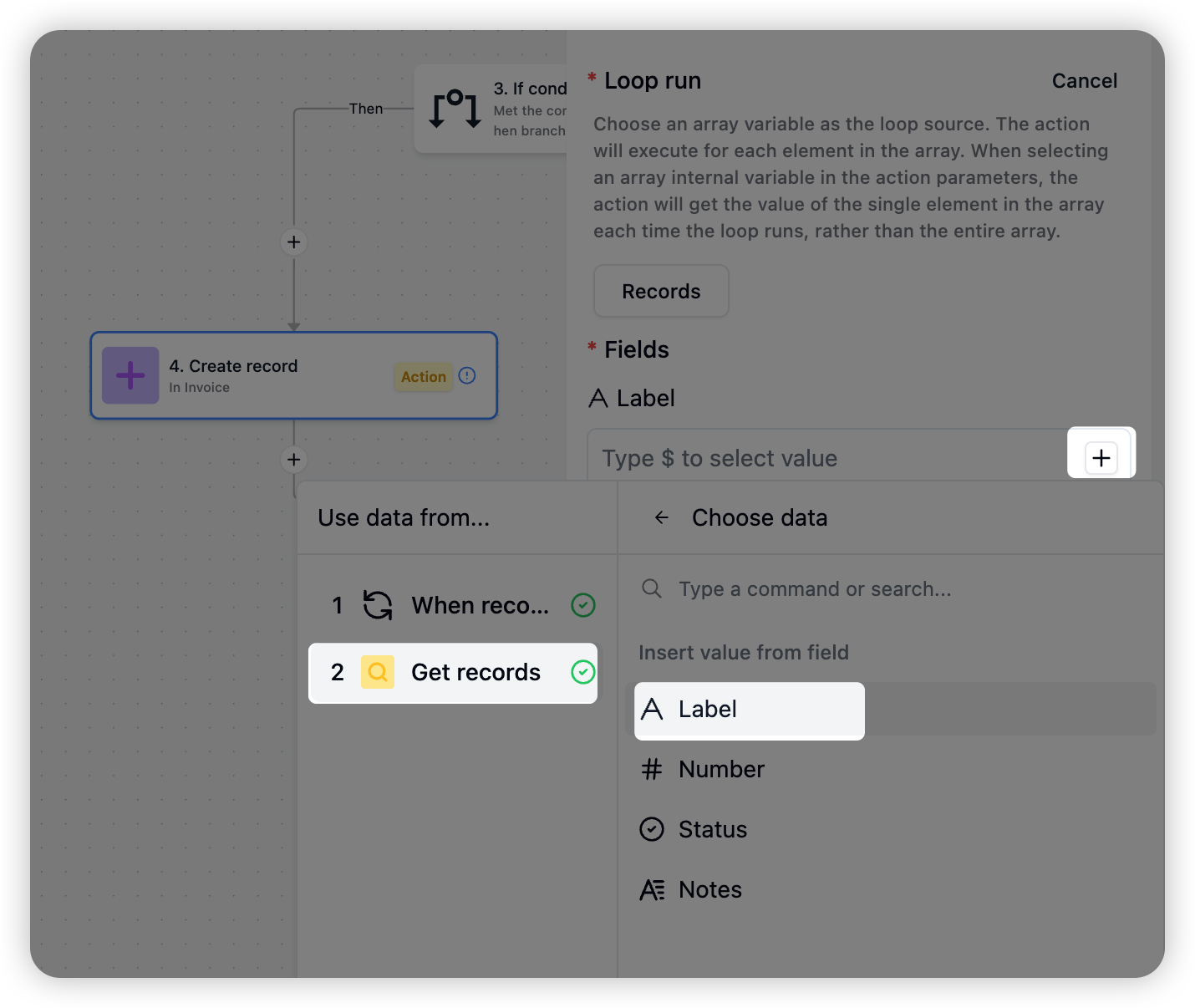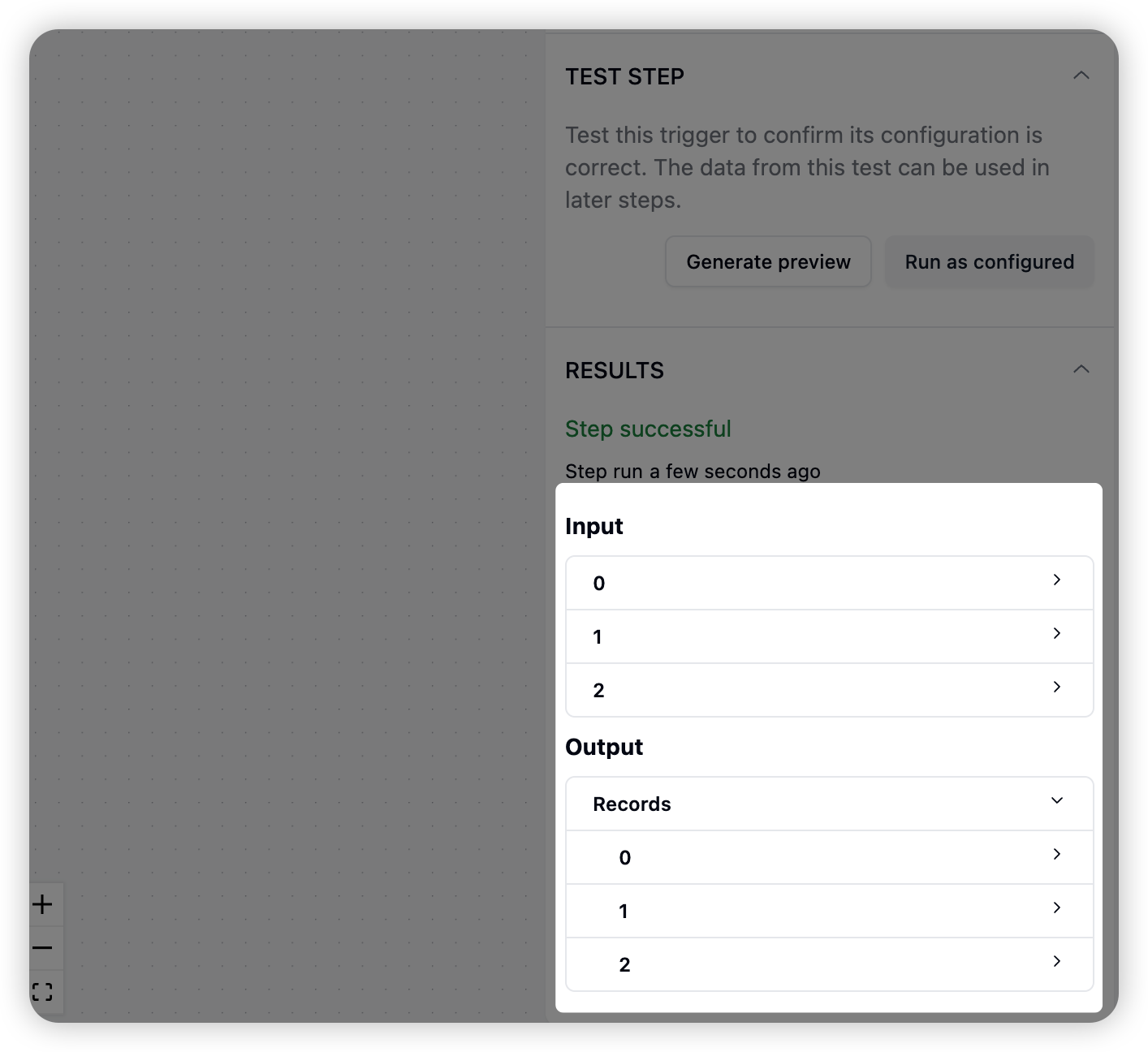Automation
Actions
Available for Plus plan and above
1. Create Record
Function: Creates a new record in a specified table. Configuration:- Target Table: Select the table where you want to create the record
-
Field Values: Set values for each field in the new record
- Supports both static values and dynamic variables
- Multiple fields can be configured
- Ensure all required fields are filled
- You can use trigger data or data from previous steps to populate the new record
2. Get Records
Function: Retrieves records from a specified view or based on specific conditions. Configuration:- Data Source: Select the table and view to query
- Query Conditions: Set filters (optional)
- Sort: Configure result sorting (optional)
- Limit: Set maximum number of records to return (up to 1000)
- Use query conditions efficiently to optimize performance
- Retrieved records can be used in subsequent actions
3. HTTP Request
Function: Sends custom HTTP requests to external APIs. Configuration:- Request URL: Enter the target API URL
- Request Method: Choose GET, POST, PUT, DELETE, etc.
- Headers: Add custom HTTP headers
- Body: Set request body content (for POST, PUT methods)
- Mixed Mode: Combine static values and dynamic variables in requests
- File Mode: Specifically for sending file data
- Ensure URL and authentication details are correct
- Be mindful of API rate limits and response formats
4. Send Email
Function: Sends customized emails. Configuration:- Recipients: Enter recipient email addresses
- Subject: Set email subject
- Body: Compose email content
- Sender Name: Customize the display name of the sender
- CC: Add carbon copy recipients
- BCC: Add blind carbon copy recipients
- Reply-To: Set reply-to email address
- Attachments: Add email attachments
- Supports HTML formatting in email content
- Use dynamic variables to personalize emails
- Be aware of attachment size limits
5. Update Record
Function: Updates field values in existing records. Configuration:- Target Record: Select the record to update via table and record ID
- Update Fields: Choose fields to update and set new values
- Update Mode:
- Single Field Update: Updates only specified fields
- Template Update: Updates multiple fields using a predefined template
- Can use conditions to determine whether to execute updates
- Updates will trigger related field automations and formula recalculations
Cross-Base Access
Teable’s automation feature supports cross-base record access, enhancing automation flexibility and functionality. Here’s a detailed explanation:Overview
- Allows accessing data from other spaces and bases in automation workflows
- Ideal for complex workflows requiring integration of multiple base information
Configuration
- Click “Cross-Base Access” next to the table selection area
- Switch to any space and base
- Select target table or view
Access Permissions
- Access is determined by the automation creator
- External bases are accessed using the automation configurator’s permissions and identity
Important Notes
- Automation will fail if the configurator loses access to the target base
Use Cases
- Data Integration: Gather data from multiple bases for analysis or reporting
- Cross-Department Collaboration: Sync or update information between different department bases
- Global Updates: Update records across multiple bases based on changes in one base
Application in Existing Actions
- Create Records: Create new records based on data from other bases
- Get Records: Retrieve records from other bases for current automation
- Update Records: Update current base records using cross-base information
Loop run
Overview Loop run allows batch processing of multiple elements in an array when performing update records, create records, and HTTP request operations. The system automatically iterates through each array element and executes operations sequentially, significantly improving data processing efficiency. Configuration GuideUpdate and Create Records Configuration
- Locate the table selection area
- Click “Loop run” below the table selection area
- Select an array variable as the loop source from the dropdown menu
- Select loop data source: Choose an array variable containing multiple data entries (e.g., record list)


- Configure field mapping: Select specific element variables from the record list in field values
 The system will automatically create corresponding records upon execution.
The system will automatically create corresponding records upon execution.

HTTP Request Configuration
- Enter the HTTP request editing interface
- Find the “Array Output” option above the body editing area
- Click and select the array data source for loop processing
Data Processing Mechanism
- System automatically iterates through each array element
- When selecting array variables in parameter configuration, each iteration processes only the current element value
- Execution follows array element order
- When using array output directly in the body editor, array elements are automatically converted to string format
- Bulk user data import
- Batch order creation
- Bulk task generation
2. Batch Record Updates
- Bulk status modifications
- Batch price updates
- Bulk inventory adjustments
3. Batch HTTP Requests
- Bulk notification pushing
- Batch data synchronization
- Bulk information validation
Previous
AI ActionIn automation, an action is one of the operations to be executed after a trigger is activated. Teable's AI Action enables dynamic parsing and content generation of table data through the intelligent combination of natural language instructions (Prompt) and structured data (field values).
Next